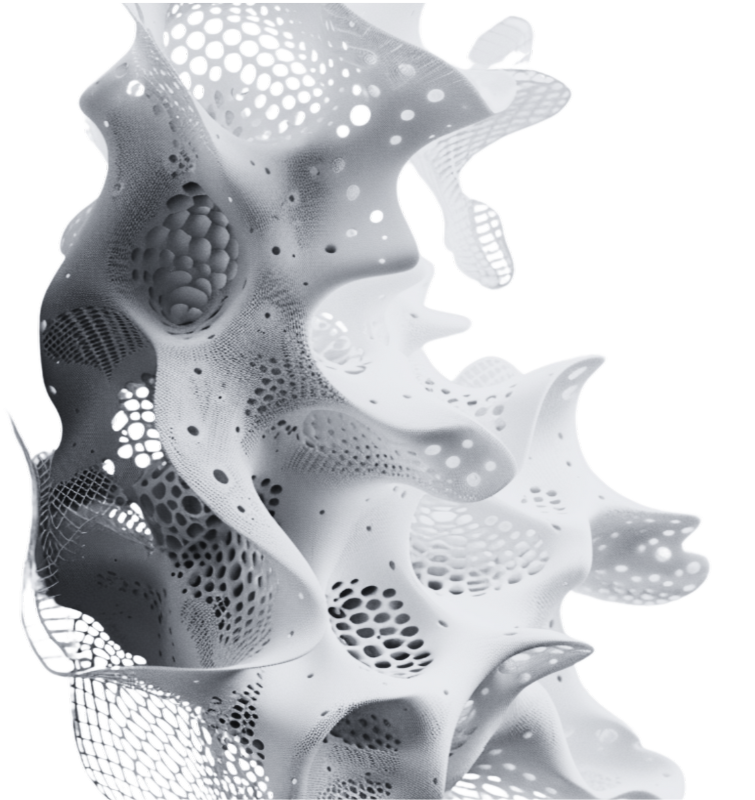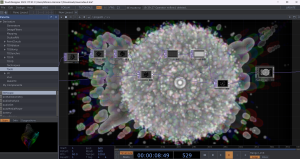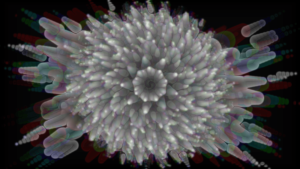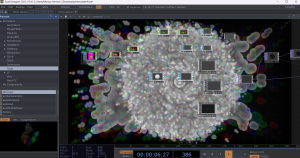Aesthetic
consciousness
AS AN EMERGENT PHENOMENON,
A COMPLEX SYSTEMS APPROACH
Imagine arriving on a new planet...
The landscape is full of strange, unfamiliar structures-organic shapes that feel strangely beautiful. You can’t quite name what you see, but you feel something deep inside of you. Then, over time, something curious happens. You begin to recognize the shapes, the geometric patterns of life you once knew on your home planet. Familiar, but different.
So now I ask:
Did you find them beautiful because they were truly alien, or because, somehow, they reminded you of something deeply familiar?

Aesthetic consciousness emerges as a need to integrate fragmented approaches to artistic and perceptual experience, encompassing the sensory, emotional, cognitive, and symbolic realms.
This fragmentation has been fueled by both traditional philosophical models, such as Kantian aesthetic judgment, and contemporary neuroscientific approaches, particularly neuroaestheticswhich tend to reduce the aesthetic to neural correlates of taste and beauty.
In response to these limitations, this research proposes understanding aesthetic consciousness as an emergent phenomenon within complex adaptive systems. From this perspective, the aesthetic is not a fixed attribute of the object nor merely a biological or cultural response, but a dynamic process manifested in the interaction between the subject, the environment ( both immediate and cultural), and their perceptual structures.
Concepts such as fractal self-referentiality, pattern emergence, and context-sensitivity help articulate a non-reductionist vision of aesthetics, where consciousness is not seen as an epiphenomenon but as an active function of integration, reorganization, and meaning-making-intrinsic to living systems that co-determine their world through aesthetic experience.
This self-referentiality is not only conceptual but also has a visual and structural expression observable in fractal patterns and/or chaos theory. Just as these structures are built from the repetition of a simple rule upon itself, aesthetic consciousness manifests as a dynamic and recursive construction of the subject, who experiences and reorganizes themselves in relation to the environment.
This research adopts a practice-based methodology grounded in transdisciplinary research-creation. Through the use of fMRI data as raw material, the project develops a visual system that translates neural activity into dynamic imagery inspired by fractal structures and chaos theory. The aim is not to represent aesthetic consciousness but to evoke and generate it through the interaction between form, perception, and embodied interpretation.
The use of visual programming environments and neural data allows for a speculative aesthetic practice. speculative aesthetic practice where form emerges from cognition, and cognition is reshaped by form. This recursive loop constitutes a methodological framework in which the act of making is also an act of knowing.
The end, perhaps what we call “beauty” is not a fixed trait of the object, nor a predefined response in the brain, but a resonance of the object with the brain. resonance-a recursive echo between body, mind, and world. Aesthetic consciousness emerges as a living process of pattern recognition, meaning-making, and transformation.
Fractals offer a compelling metaphor and model for this process: self-similar structures that reorganize themselves across scales, generating complexity through repetition and variation. Like living systems, they are not static, but adaptive-modifying themselves to maintain flow, coherence, and identity over time. In this sense, the aesthetic experience becomes a fractal loop-a recursive interplay between perception, memory, and affect, where each encounter reconfigures the self in subtle but enduring ways.
Beauty, then, is not merely perceived-it is performed, enacted in the ongoing self-organization of consciousness. The strange becomes familiar not through recognition alone, but through integration: the internal remapping of the world’s patterns within the cognitive-emotional architecture of the body.





